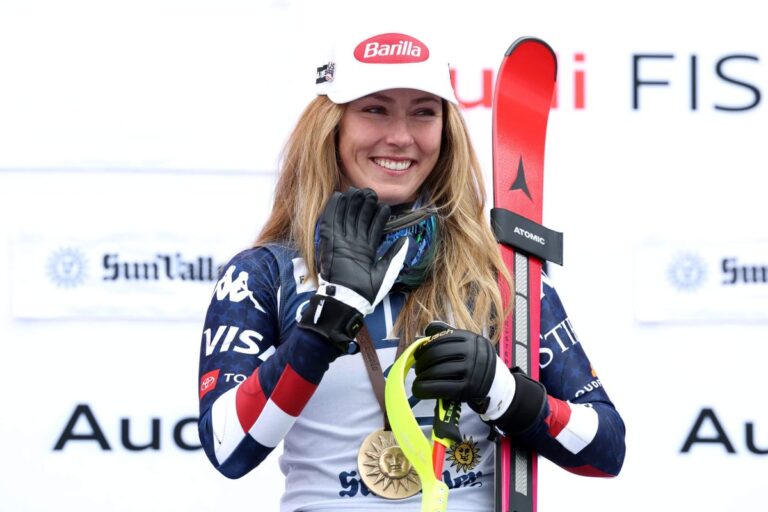Mikaela Shiffrin, Alpine skiing’s most decorated athlete and the sport’s biggest star, said Wednesday she expects to compete in three races at the 2026 Winter Olympics in Italy in February, which would represent half of the schedule she pursued four years ago in Beijing.
Shiffrin, whose best events are slalom and giant slalom, had already announced she would not compete in downhill this season. Shiffrin suffered from symptoms of post-traumatic stress disorder last season after a November crash in which she suffered a deep stab wound in her stomach, likely from a gate, as she tumbled across the snow and ice in Killington, Vt.
Though Shiffrin returned to competition two months later, she struggled with the faster giant slalom races, which she described during a conference call Wednesday ahead of the season’s opening race as “still very much a work in progress.”
With Shiffrin still trying to grow into her comfort zone in giant slalom, she eschewed downhill altogether and remains unsure about how much she will be able to race in super-G, a high-speed race that incorporates long, sweeping turns, before the Olympics.
That uncertainty, combined with the depth and talent of the women expected to make the U.S. Alpine team and compete in Cortina, has led Shiffrin to believe her Olympic schedule will include slalom, giant slalom and the team combined event, in which she will pair with a speed skier and ski a run of slalom while a teammate skis the downhill.
“I’m feeling skeptical that I’m gonna be able to expect to balance it all, or even be part of the qualifying team for super-G,” Shiffrin said during a video call with journalists from Soelden, Austria, where she will race on Saturday. “Like I said, I want to give it a go. I haven’t let go of that dream, but I’ve been to Games where I skied six events, I skied all of the events, and it was a wonderful experience. Wouldn’t do it again. It was exhausting for multiple years after the fact.”
It also didn’t go so well. In Beijing, Shiffrin struggled to complete races, falling three times and leaving the Olympics without a medal for the first time in her career. She had previously won gold medals in Russia in 2014 (slalom) and South Korea in 2018 (giant slalom). In South Korea, Shiffrin also won the silver in the combined race when it was an individual event.
The U.S. is expected to have one of its deepest teams of female speed skiers, with Lindsey Vonn, Lauren Macuga and Breezy Johnson all expected to compete for spots on the podium in downhill and super-G.
Macuga is a rising 23-year-old who finished fourth in the World Cup downhill standings last season. Johnson, 29, won two golds at last year’s world championships — the team combined with Shiffrin and the individual downhill. Vonn, 41, who has come out of retirement following a partial knee replacement, adds a healthy dose of star power as well. In the final race of last season, Vonn made her 138th career World Cup podium.
The shift in approach has allowed Shiffrin to lock in on her best events throughout the offseason and during training trips to South America. Rather than focusing on what she won’t race, she is focusing on what she will.
“This year it’s really incredible to dream about team combined,” she said. “So I would expect to be racing three events. I think that’s probably pretty safe to say.”
Images are for reference only.Images and contents gathered automatic from google or 3rd party sources.All rights on the images and contents are with their legal original owners.
